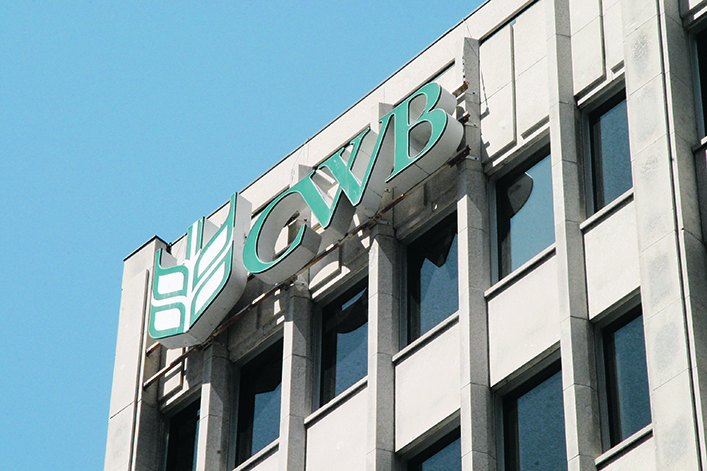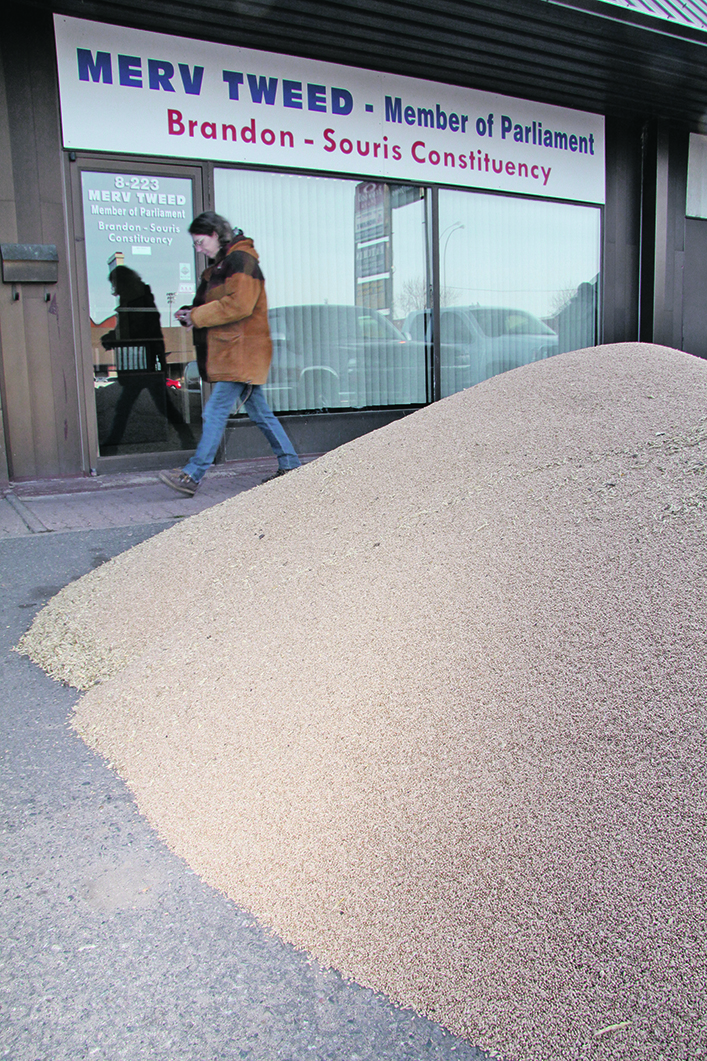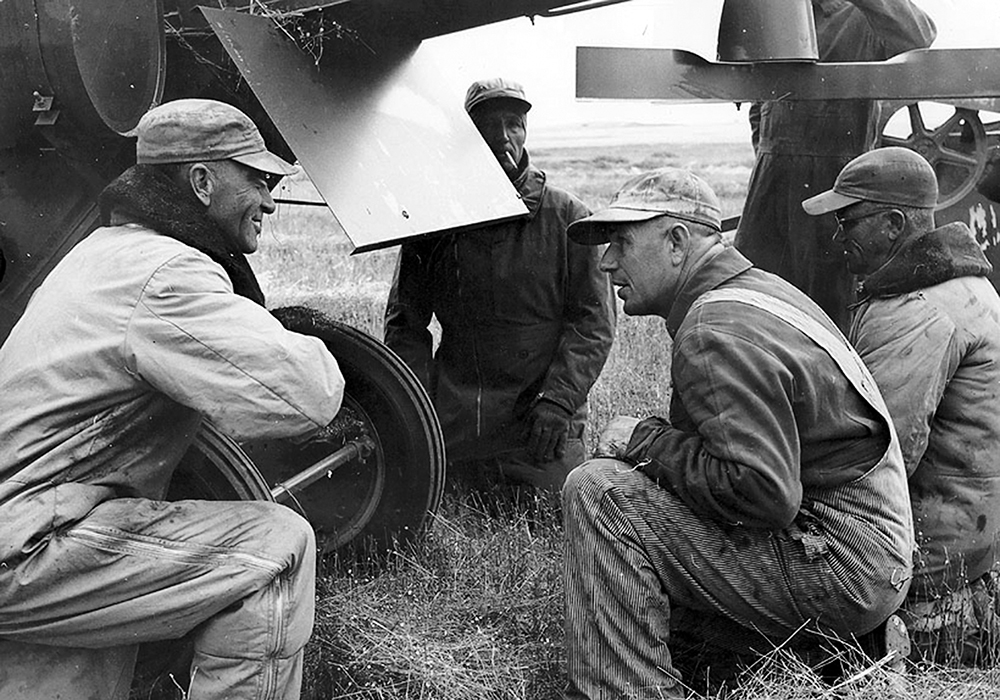A clash of visions between open and controlled markets dominated the prairie ag landscape for much of the last century
Murray Fulton didn’t hesitate when asked to identify an overarching theme in grain marketing on the Canadian Prairies over the last century.
“It’s the big question — should you rely on markets, or should you rely on some kind of more controlled system, whether it’s co-op owned, or government controlled?” said the University of Saskatchewan professor emeritus.
It’s a theme that dates to the beginning of the 20th century when elements of the progressive era political reform movement in the United States spilled north across the border.
The movement was about cleaning up corruption, improving working conditions in factories and breaking up monopolies.
Fulton believes the movement played a pivotal role in the establishment of farmer-owned grain companies in the three prairie provinces.
Between 1905 and 1910, farmers created the Grain Growers’ Grain Company, the Saskatchewan Co-operative Elevator Company and the Alberta Farmers’ Co-operative Elevator Company.
“The idea of the farmers taking control is part of what you see coming out of that era,” said the agricultural economist and former director of the Canadian Centre for the Study of Co-operatives.
The movement was also instrumental in the passing of the Canada Grain Act and establishment of the Canadian Grain Commission in 1912.

The act laid out the rights and responsibilities of farmers and grain companies.
“It starts to put some structure on the grain marketing system,” he said.
The government supported the grain co-ops and provided rules to give farmers some power, but it refrained from having any direct involvement in grain marketing.
That all changed during the First World War. The Winnipeg Exchange was closed, and the government centralized grain buying and provided a floor price for domestic and export sales.
A board was formed in 1919 to market that year’s crop. It was meant solely as a wartime measure.
But after the war, there was farmer support for maintaining a central selling agency.
Fulton refers to this as the New Deal era of grain marketing. The New Deal was a series of programs, reforms and regulations in the 1930s enacted by U.S. President Franklin Roosevelt in response to the Great Depression.
The New Deal reforms were heavily influenced by British economist John Maynard Keynes.
It was a time when the government stepped in and moulded the way grain markets would work with set-aside programs, floor prices and government purchases of grain.
“This is now government becoming much more involved,” he said.
It led to the establishment of the Canadian Wheat Board in 1935. The CWB became a monopoly in 1943, when farmers were forced to sell their wheat through the agency. Oats and barley were added to the monopoly in 1949.
Farmers received the same price for their grain and were, at times, subject to production quotas.
“If they had to cut back on production to keep the price up, everybody would take on a little bit of that hurt,” said Fulton.
But by the 1970s, cracks were starting to form in the CWB model as the teachings of American free market economist Milton Friedman started to take hold.
Farmers were getting fed up after several years of restrictive production quotas and bloated summer fallow acreage.
“Farmers were saying, ‘something doesn’t make sense here,’” said Fulton.
Russia’s Great Grain Robbery put an exclamation point on the unrest. In July 1972, the Soviet Union purchased 10 million tons of U.S. wheat and corn at heavily subsidized prices.
The U.S. later discovered that the world grain market had suffered a severe shortfall, which drove up prices around the world.
“(Canadian) farmers are sitting there saying, ‘not only did we cut back production but in fact when there came an opportunity to sell at a great price, we didn’t have anything to sell. How stupid is that?’” said Fulton.
Those kinds of sentiments gave birth to anti-CWB groups like the Western Canadian Wheat Growers Association and Weyburn Inland Terminal.

“This is the beginning of a counter-push,” he said.
International grain companies like Cargill also started advocating for changes to Canada’s grain marketing system.
Around the same time, a new crop called canola was introduced to Western Canada. Breeders created it by changing the fatty acid composition of rapeseed.
“This is coming on at exactly the same time that the questions are being raised about the efficacy of the Canadian Wheat Board model,” said Fulton.
He has no doubt the crop would have been placed under the domain of the CWB had it been introduced 15 years earlier.
But in 1973, then wheat board minister Otto Lang decided to let farmers settle it themselves.
The federal government sent ballots to 41,124 farmers who had grown canola the previous couple of years. Of the 32,279 ballots that were returned, 52.7 percent voted for the open market.
A hybrid grain marketing system emerged with the CWB in control of wheat, barley and oats and other crops like canola and feedgrains traded on the open market.
The Keynesian era came to an end in the 1980s with the election of U.S. President Ronald Reagan and United Kingdom Prime Minister Margaret Thatcher.
At the start of the 1980s, the European Union with its heavily subsidized Common Agricultural Policy had become a target for the U.S.
The two major players engaged in a costly and disruptive trade war that pushed grain prices lower.
The CWB struggled to compete in that environment. Low wheat prices and high inflation pressured farmer margins.
The Uruguay Round of the General Agreement on Tariffs and Trade (GATT) was the first trade round that tried to put an end to the subsidy war.
The U.S. was pouring big money into its Export Enhancement Program, which eventually forced other exporters to cry uncle and agree under GATT to rein in their subsidies.
Canada began dismantling its Crowsnest Pass rail transportation subsidy program.
“(And) the wheat board was under significant attack as a state trading enterprise,” Fulton said.
It was about this time when the three prairie pools began to struggle.
“They really didn’t know how to respond to this new environment,” said Fulton.
They “grew up” in a highly controlled environment where the government played a major role in grain marketing and were unfamiliar with the neoliberalism of the 1980s.
“They didn’t know how to operate in that world, and they became over-aggressive,” he said.
In the 1990s the pools were transformed into publicly traded companies and the CWB lost its most important allies.

Farmers had become used to marketing crops directly with buyers with canola and feedgrains out of the CWB’s grasp and the emergence of other non-board crops like pulses, special crops and oats during the 1980s.
Grain companies became more sophisticated in getting farmers to market their crops with them and by the 1990s information about global crop conditions, supply and demand and prices was much easier to obtain.
Information is power and it gave farmers the confidence to market their crops on their own.
The CWB lost its single desk marketing power in 2012 and was later privatized in 2015 under Stephen Harper’s Conservative government.
“In many ways, the writing was on the wall,” said Fulton.
“It would have happened regardless of which party was in place.”
Perhaps the biggest development since the demise of the CWB has been the rise of China as a major player in all sorts of markets after it became a member of the World Trade Organization in 2001.
It has rapidly become the world’s largest buyer of many different crops and one of Canada’s top customers for canola, wheat, peas and barley.
Fulton has no idea what the future holds for grain marketing.
But he has seen some talk of trading blocs being created by like-minded nations, which could result in greater fragmentation of the grain industry and a shifting of global grain markets.
















